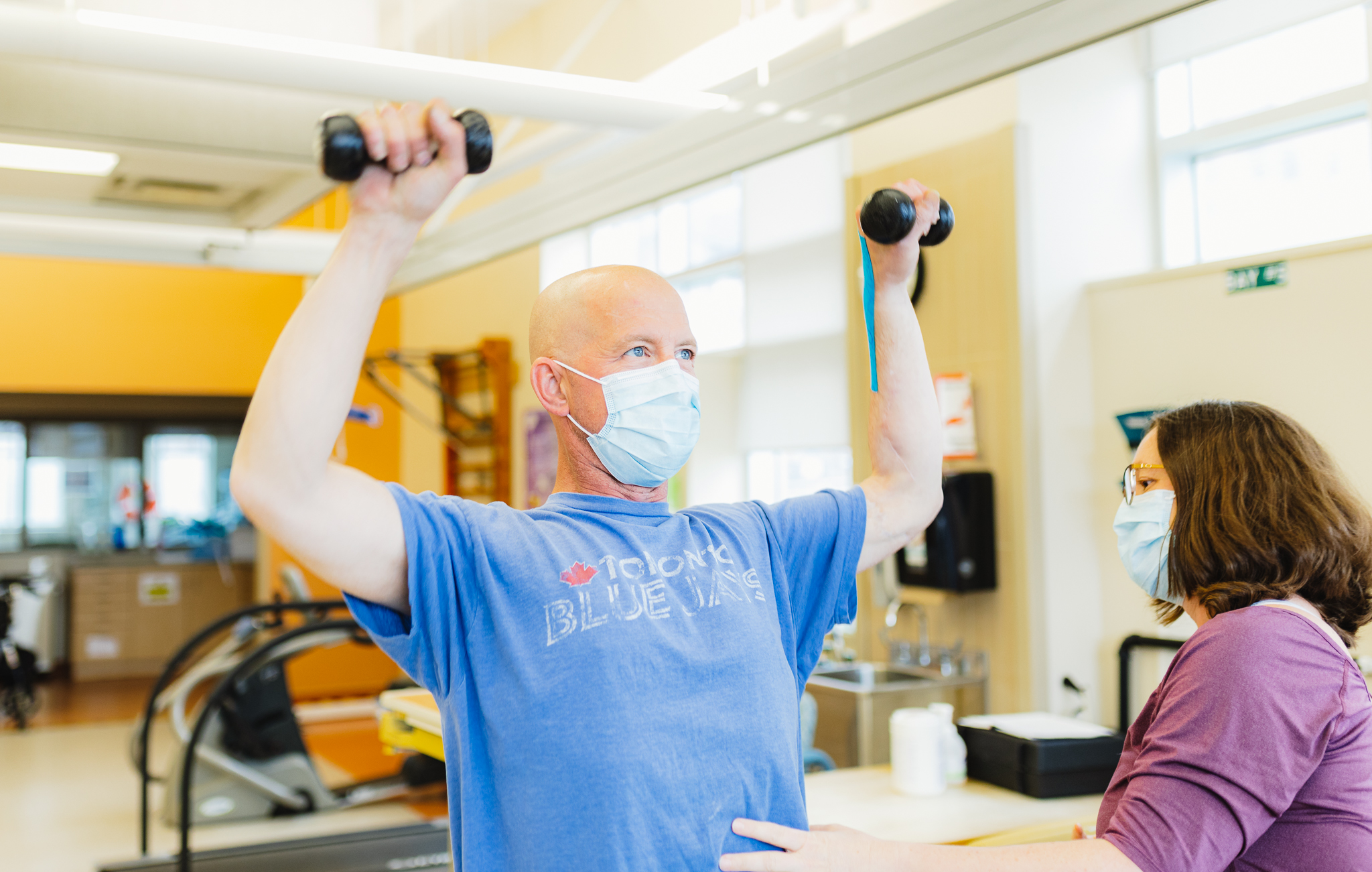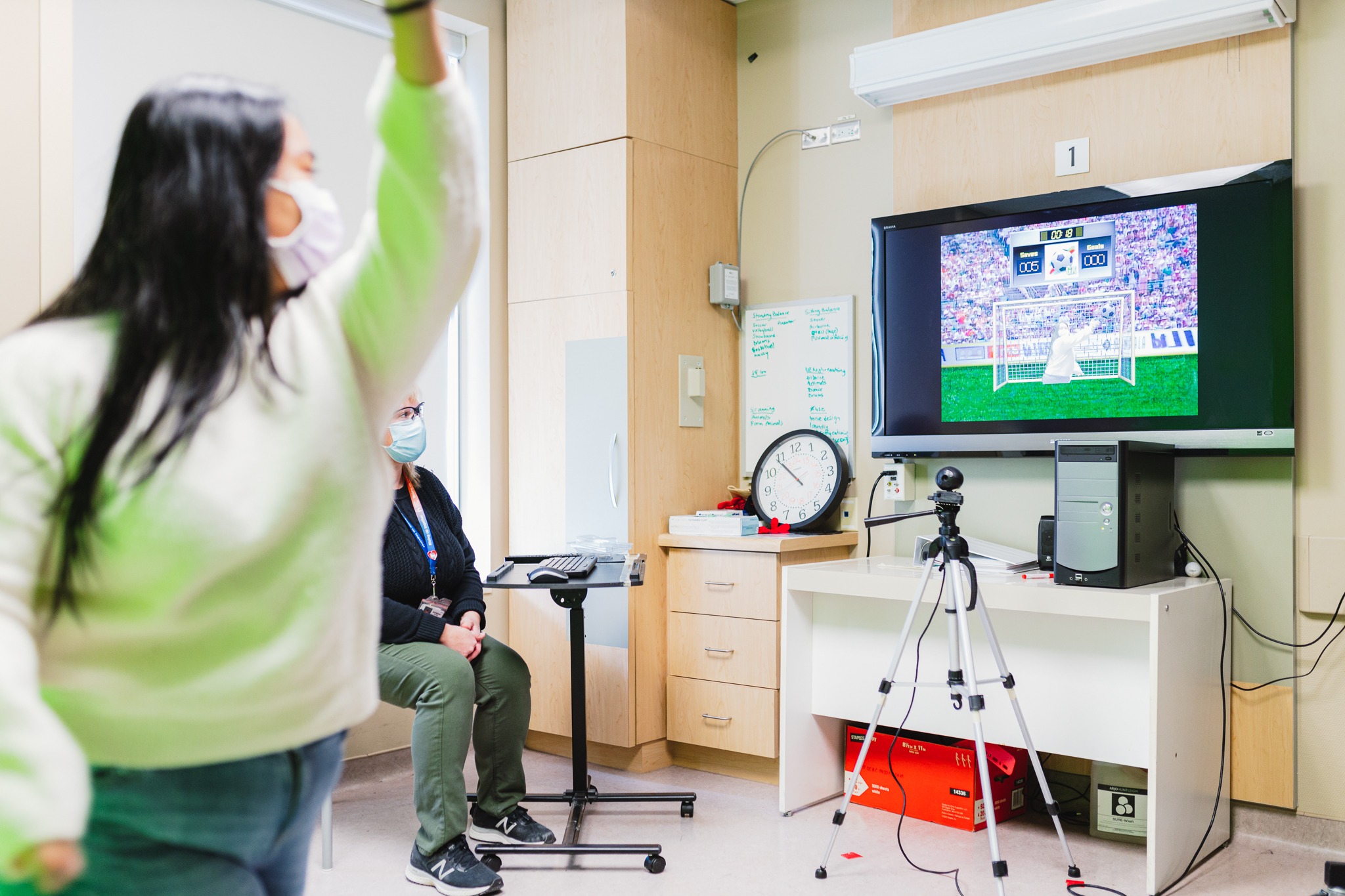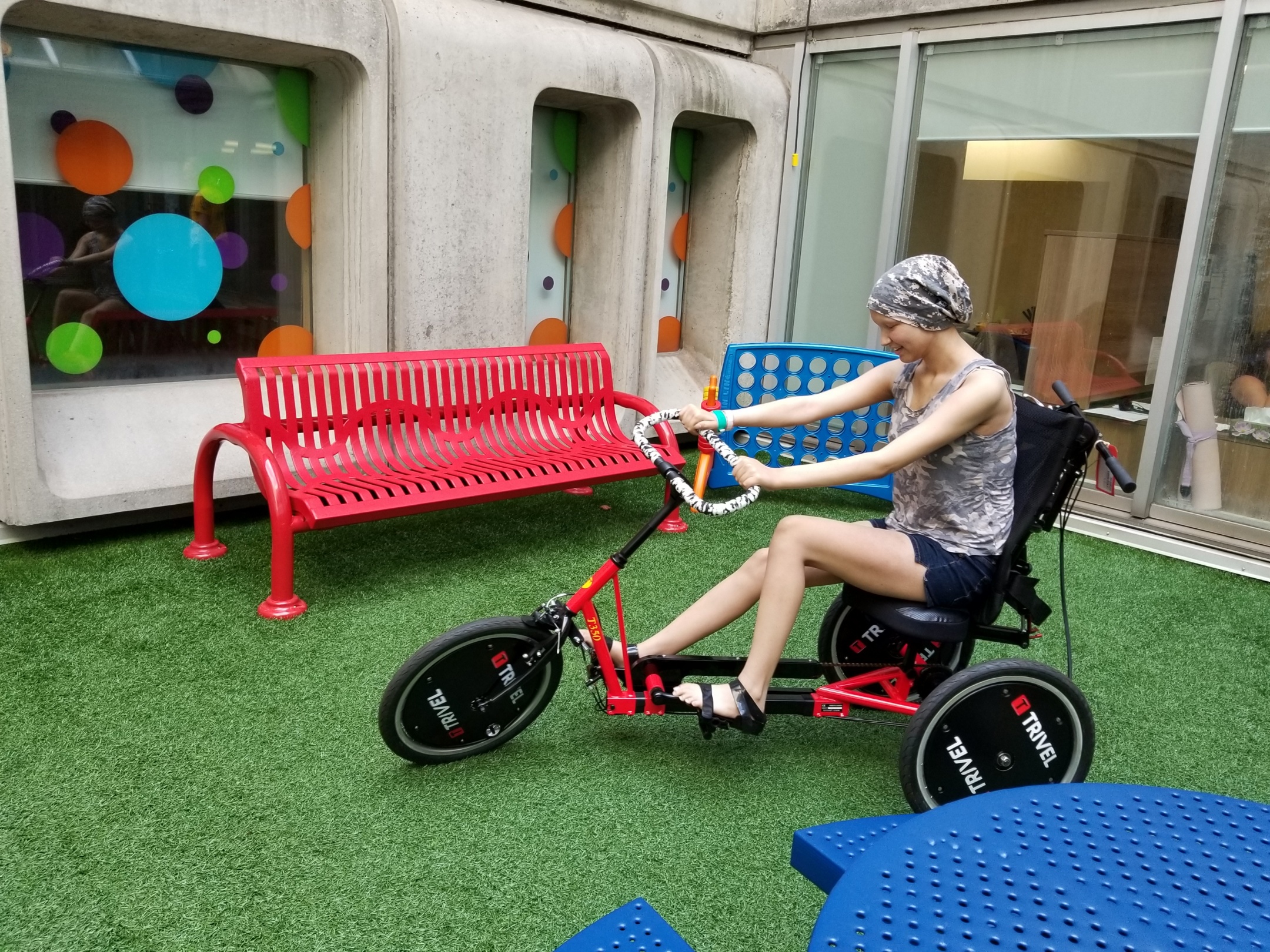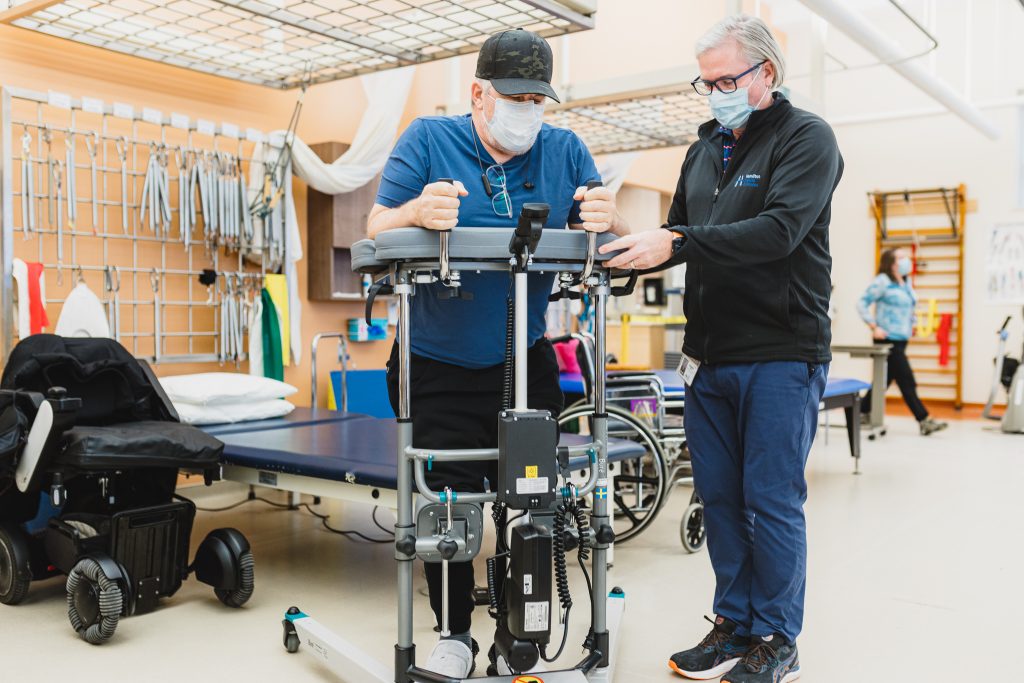
HHSVA supports patient care with $1.2 million in equipment donations
Make a Purchase, Make a Difference
The Hamilton Health Sciences Volunteer Association (HHSVA) is a non-profit organization that supports patient care at Hamilton Health Sciences (HHS) through the operation of cafes, cafeterias, gift shops and hospital parking. All profits generated are donated to enhance patient care across our family of hospitals.
Hamilton Health Sciences (HHS) rehabilitation patient Chris Patty is taking his recovery one step at a time since experiencing nerve damage to his feet one year ago.

Chris Patty, HHS rehabilitation patient
“How I ended up with this injury is a mystery,” says Patty, an outdoor enthusiast whose pastimes included hiking, fishing and camping. Then last December, Patty experienced nerve damage after undergoing heart surgery. Bedridden for several weeks, his leg muscles also weakened, leaving him unable to walk.
The 53-year-old Hamilton man, who uses a motorized wheelchair, tried home-based rehab for several months with little progression.
He began making strides towards improving his mobility two months ago, after starting a rehabilitation program at the Regional Rehabilitation Centre located at HHS Hamilton General Hospital.
Patty visits the centre three times a week, where he builds leg strength in the therapeutic pool and the gym. Specialized strength-building equipment he uses includes a motorized rehabilitation walker purchased by the centre through a donation from the Hamilton Health Sciences Volunteer Association (HHSVA). This walker, called a Rise and Go, uses electric power to help support the patient.

Tina Cooper, HHSVA executive director
“Some people don’t realize that HHS cafes, cafeterias, Give (gift) shops and parking fees raise funds that support hospital programs,” says Tina Cooper, HHSVA’s executive director.
“When our staff, physicians, patients and visitors buy food or drinks at one of our cafes, for example, the proceeds from their purchases support a wide range of hospital services, programs and equipment purchases, and staff educational opportunities.”
Supporting patient care through equipment purchases
This year, the hospital was able to spend more than $1.2 million from the HHSVA to pay for equipment and fund patient care programs.
For rehab patients, this included purchasing the Rise and Go walker as well as specialized wheelchairs, walkers, gel pads and supports for rehabilitation.
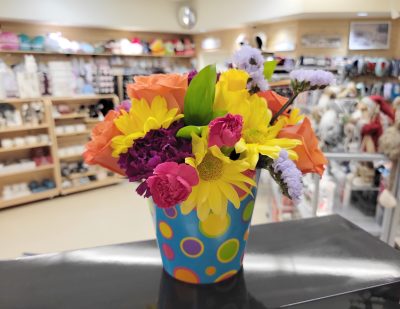
Shopping at hospital Give (gift) shops helps the HHSVA provide donations for equipment like the Rise and Go walker
The hospital also used HHSVA funds to buy:
- infant swing seats for the neonatal intensive care unit (NICU)
- hearing amplifiers and speech therapy aids
- sleeper cot chairs for family members staying overnight at a patient’s bedside
- end-of-life comfort cart supplies for patients and families
- and funding for ongoing programs such as palliative and patient recreational therapy
“Partnering with HHS to deliver excellence in patient care across our family of hospitals is a driving force for our team,” says Cooper. “We take great pride in knowing that donations make such a positive difference in the patient experience. And for our customers, it makes their purchases in our Give shops, cafés and cafeterias even more special, since proceeds are donated for purchases that support patients.”
Bridging a gap
With a traditional non-motorized walker, patients support themselves in an upright position which takes a lot of arm and leg strength.

Mike Finlay, HHS physiotherapist
The Rise and Go walker provides extra support for standing and walking. Its stable frame and hand grips allow patients to safely pull themselves up to a standing position and rest their forearms on support pads, which takes some of the weight off their legs, making it easier to walk. The motorized height adjustment controller gives patients the freedom to raise or lower the walker as needed to get the positioning right.
For many patients, it’s a crucial tool in their rehabilitation because it gives them the ability to safely stand and walk so they can build back the muscle strength needed to move closer to independent mobility.
“My goal is to walk well enough that I can skydive next summer,” says Patty, who didn’t let his wheelchair prevent him from enjoying a camping trip last summer. “I was a recreational skydiver in my younger days, and I promised myself that I’ll skydive again next summer if I can get walking again.”
A fabricator, fitter and welder by trade, he would also like to return to work someday.
The Rise and Go walker provides enough support for Patty to walk around the rehabilitation centre gym and hallways. And the more he moves, the more leg strength he’s building. “I’m noticing that I’m getting better at supporting weight on my legs,” he says. “I can definitely feel my leg muscles getting built up.”
HHSVA support

All profits generated by Give (gift) shop purchases are donated to enhance patient care across HHS hospitals.
Mike Finlay, an HHS physiotherapist, says the Rise and Go walker filled a gap in the department’s walker supply. The department has another type of motorized walker that provides highly-intensive support to get patients on their feet. They also have regular, non-motorized walkers for lighter support.
“The Rise and Go walker is a bridge between those other types, so patients can progress from intensive support to moderate and then lighter support as they build strength and mobility,” says Finlay.
The Rise and Go walker also helps prevent staff injuries, because it helps lift patients from sitting to standing. “This takes the burden off staff to managing all of this lifting,” says Finlay.
“We’re so appreciative of the support we receive from the HHSVA. It allows us to purchase equipment that’s highly specialized so we can provide the very best patient care.”

